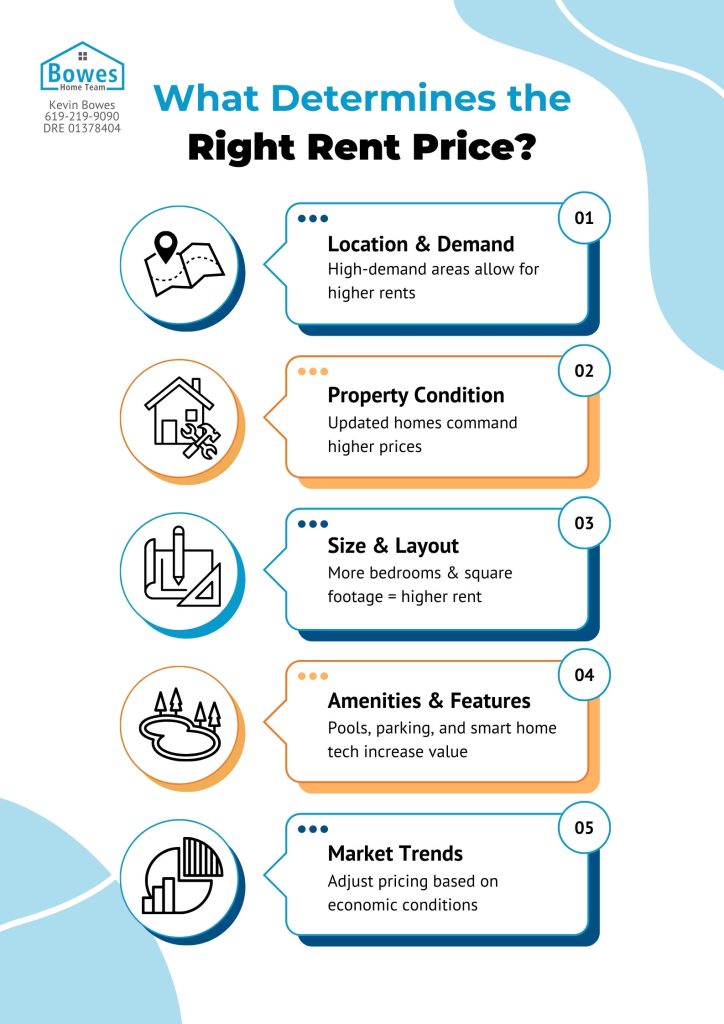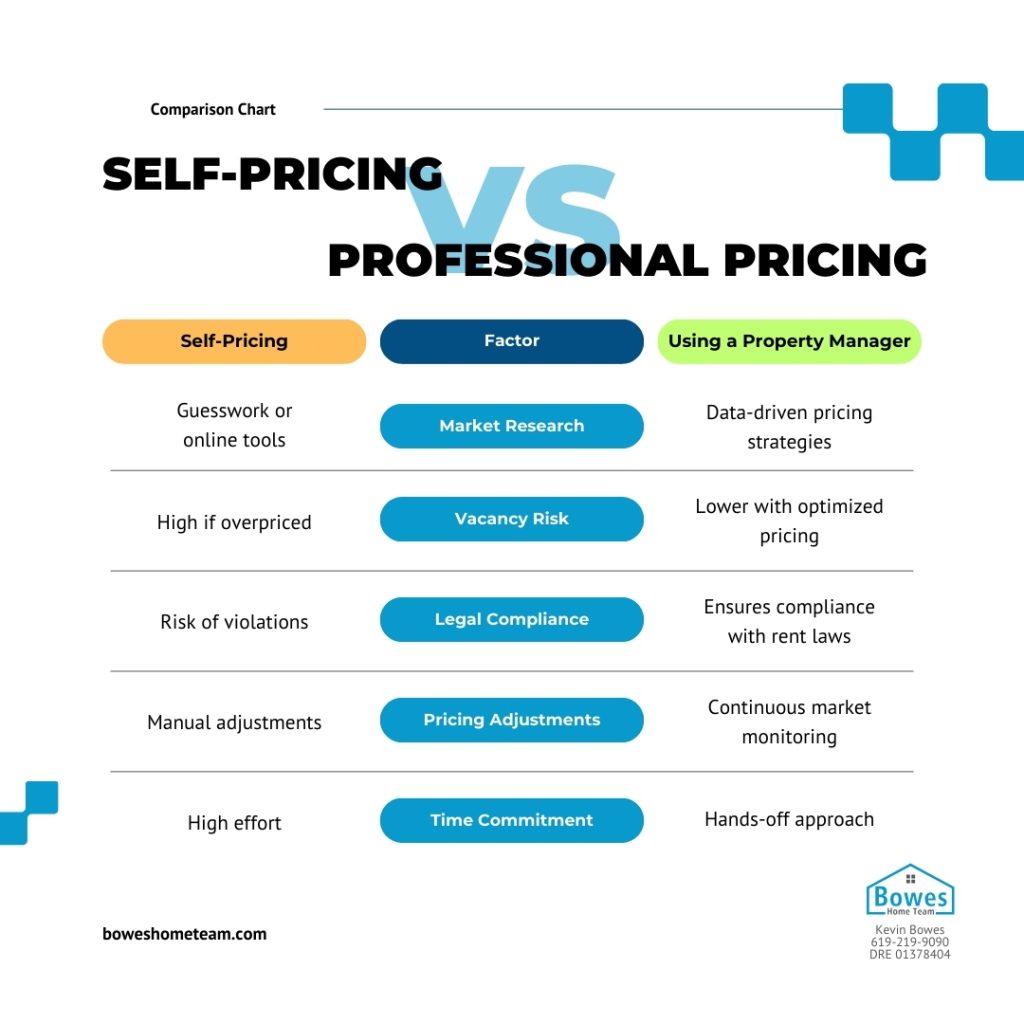Setting the right price for your rental property is a crucial step in maximizing profits while attracting the right tenants. If your price is too high, you risk long vacancies. If it’s too low, you could be losing income.
So how do you find the perfect rental price? In this guide, we’ll break down key pricing strategies, ensuring your rental stays competitive while covering your costs.
Your first step in pricing your rental property is understanding your local rental market. Rental prices fluctuate based on location, property type, and demand.
Pro Tip: If you’re struggling to find a rental price, use a rental valuation tool like Rentometer or Zillow’s Rent Zestimate.
A well-maintained property justifies a higher rent and attracts better tenants. If your property is outdated, you may need to price lower to stay competitive.
| Factor | Impact on Rent |
| Updated Interiors | Renovated kitchens & bathrooms increase rental value |
| Curb Appeal | Good landscaping attracts higher-paying tenants |
| Smart Home Features | Tenants are willing to pay more for smart locks, thermostats, and security systems |
| Amenities | Features like in-unit laundry, parking, and pools allow for higher rent |
Example: A newly renovated unit with stainless steel appliances and hardwood floors could rent for $200-$400 more than a dated unit in the same location.

The size and layout of your property also play a big role in pricing. Generally, more bedrooms and bathrooms mean a higher rent.
Example: A 1-bedroom apartment in downtown San Diego might rent for $2,500/month, while a 2-bedroom in the same area could go for $3,400/month.
Your rental price should cover your expenses while remaining competitive.
| Expense Type | Average Cost |
| Property Management Fees | 8-12% of monthly rent |
| Maintenance & Repairs | 1-2% of property value annually |
| Property Insurance | $500-$2,000 per year |
| Taxes & HOA Fees | Varies by location |
Pro Tip: Don’t set your rent too low—you should be able to cover your costs while making a profit.
Before pricing your rental, check for rent control laws that may apply to your property.
Tip: Always consult a real estate lawyer or property manager to stay updated on legal changes.

Rental prices fluctuate throughout the year, so it’s important to factor in seasonality.
| Season | Demand Level | Pricing Strategy |
| Spring & Summer | High demand | Price slightly higher |
| Fall & Winter | Lower demand | Offer incentives or slight reductions |
Example: A rental unit going for $3,000 in summer may need to be adjusted to $2,800 in winter to attract tenants faster.
Even after setting a price, you need to monitor market response and adjust if needed.
Pro Tip: Start with a slightly higher rent and adjust based on tenant interest.
Pricing your rental property correctly requires a balance between market trends, property value, and covering expenses.
By following these steps, you can maximize rental income while staying competitive.
Research comparable properties in your area, check rental market trends, and factor in the condition, size, and amenities of your property. Online tools like Rentometer and Zillow’s Rent Zestimate can also help.
If your rent is too high, your property may sit vacant for longer, leading to lost income. Tenants compare options, and an overpriced unit can drive them to more competitively priced listings.
It depends on your strategy. Including utilities can make your rental more attractive, especially for short-term leases, but it may also increase your overhead costs. Some landlords prefer to keep rent lower and have tenants pay utilities separately.
This depends on local rent control laws. In California, AB 1482 limits rent increases to 5% plus inflation per year for many properties. Always check local regulations before increasing rent.
If you hire a property manager, their fee (typically 8-12% of monthly rent) should be factored into your rental price to ensure you’re covering all expenses while maintaining profitability.
If you receive an overwhelming number of applications within a few days, it could mean you’ve priced your rental too low. Consider adjusting your price or screening applicants more selectively.
Yes! Demand is usually higher in spring and summer, allowing for slightly higher rent prices. During fall and winter, rental demand drops, and you may need to lower prices or offer incentives.
If your rental is sitting vacant, offering one month free rent, reduced security deposit, or free parking can help attract tenants faster.
Check with local housing authorities or consult a property manager to ensure your rental price adjustments align with legal restrictions in your area.
List your rental at a competitive rate and monitor tenant interest. If you get little to no inquiries, you may need to lower the rent. If you receive too many inquiries too quickly, you might be underpricing your property.
